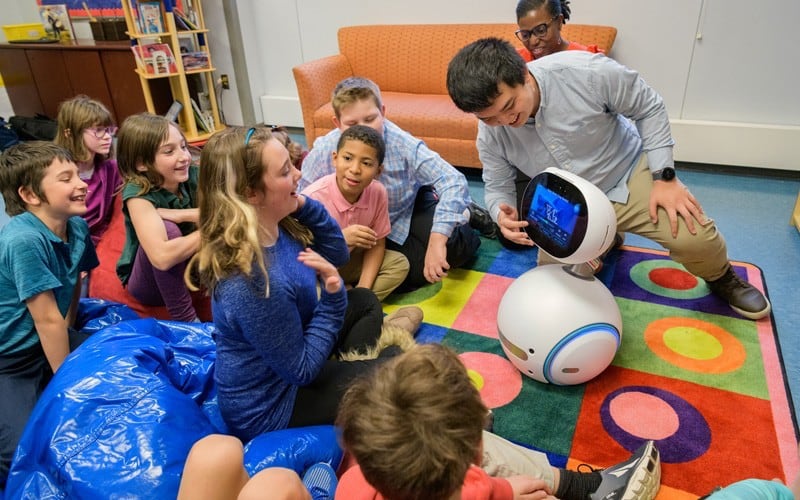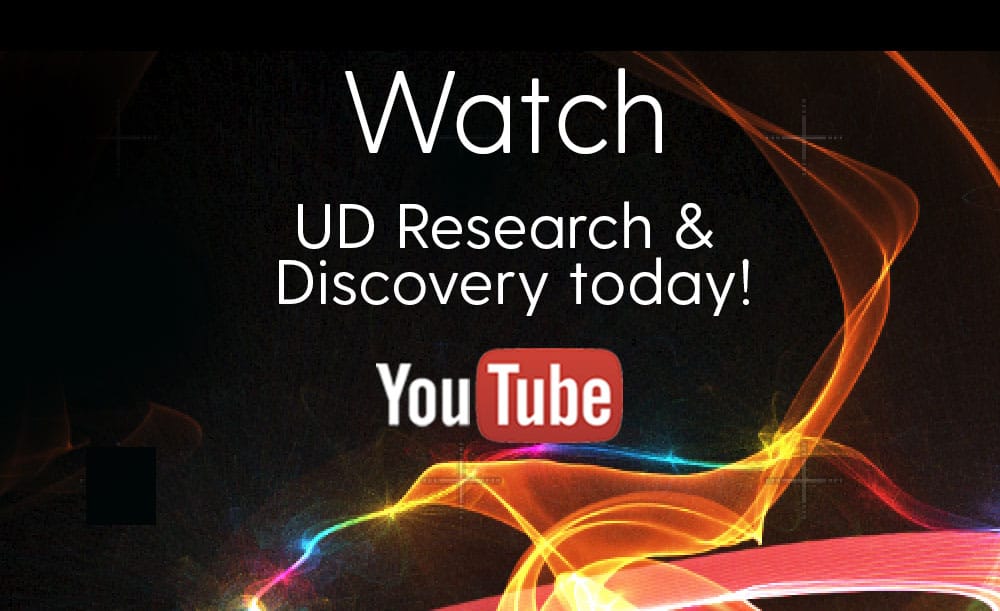RESEARCH
DISCOVERY
A Blog Devoted to UD Innovation, Excellence & Scholarship
COVID-19
Return to Research
UD Prof. Jae Kyeom Kim (left) and graduate student Mersady Redding — wearing masks and properly separated to meet coronavirus pandemic guidelines — work on research projects in the Nutrigenomics Lab in the College of Health Sciences.
The shutdown required far more than turning out the lights and locking the doors of laboratories, offices and other facilities. Some technology requires special handling or consistent attention, all laboratory experiments require careful documentation, valuable data require protections to prevent irretrievable loss and some things simply couldn’t stop.
In two days’ time — from March 15 to March 17 — almost all of UD’s research went from a full gallop to an unprecedented and uncomfortable halt. Only coronavirus-related research and critical functions were permitted to continue.
You can’t just walk away from UD’s Nuclear Magnetic Resonance (NMR) Laboratory, a core facility housed in Brown Laboratory, for example.
“The superconducting magnets require refills of various cryogen liquids routinely without interruptions,” said Steve Bai, director of the NMR Lab, which has six spectrometers used for analysis of organic and inorganic materials, semi-solid materials and biomolecular sampling. “It was of paramount importance to keep these magnets in healthy condition so that they were ready when researchers returned to campus.”
The majority of the enterprise remained shuttered until June 4, when the first wave of eligible investigators started to reopen labs and other facilities. A second wave was approved for return a few weeks later and the third took effect Monday, Aug. 11.
Planning for the mass departure and the phased return has commandeered the schedules of administrators, faculty, staff, students, researchers, facilities managers and health care officials, all of whom convened in scores of virtual meetings to review expert advisories, work out new policies, explain what the changes meant and help everyone stay abreast of changing conditions and guidance from federal and state officials.
Charles G. Riordan, vice president for research, scholarship and innovation, has held weekly online “Research Town Hall” meetings to provide updates and field questions from all concerned. Committees continue to work through hundreds of details, including lab-specific questions and protocols, how to manage grant requirements, guidance for graduate students and other critical needs.
“While surreal doesn’t begin to describe the past five months, it has been incredibly fulfilling to see UD faculty, staff and students come together to care for one another and focus on what truly matters — the health and wellbeing of our community and the continuity of our academic and research missions,” Riordan said. “From efforts to enhance tools to diagnose COVID-19 and 3D print personal protective equipment for front line health care workers to chronicling the crisis’ impact on Delaware, UD scholars have continued to excel.”
As all of this upheaval and restructuring took place, researchers made the most of the time — catching up on writing, data analysis and other mobile-type tasks. They also submitted almost 900 research proposals in the first six months of 2020, an increase of about 6% over the same period in 2019.
UDaily asked several returning researchers about their experiences during this unprecedented interruption and how it affected their work and their perspectives.




